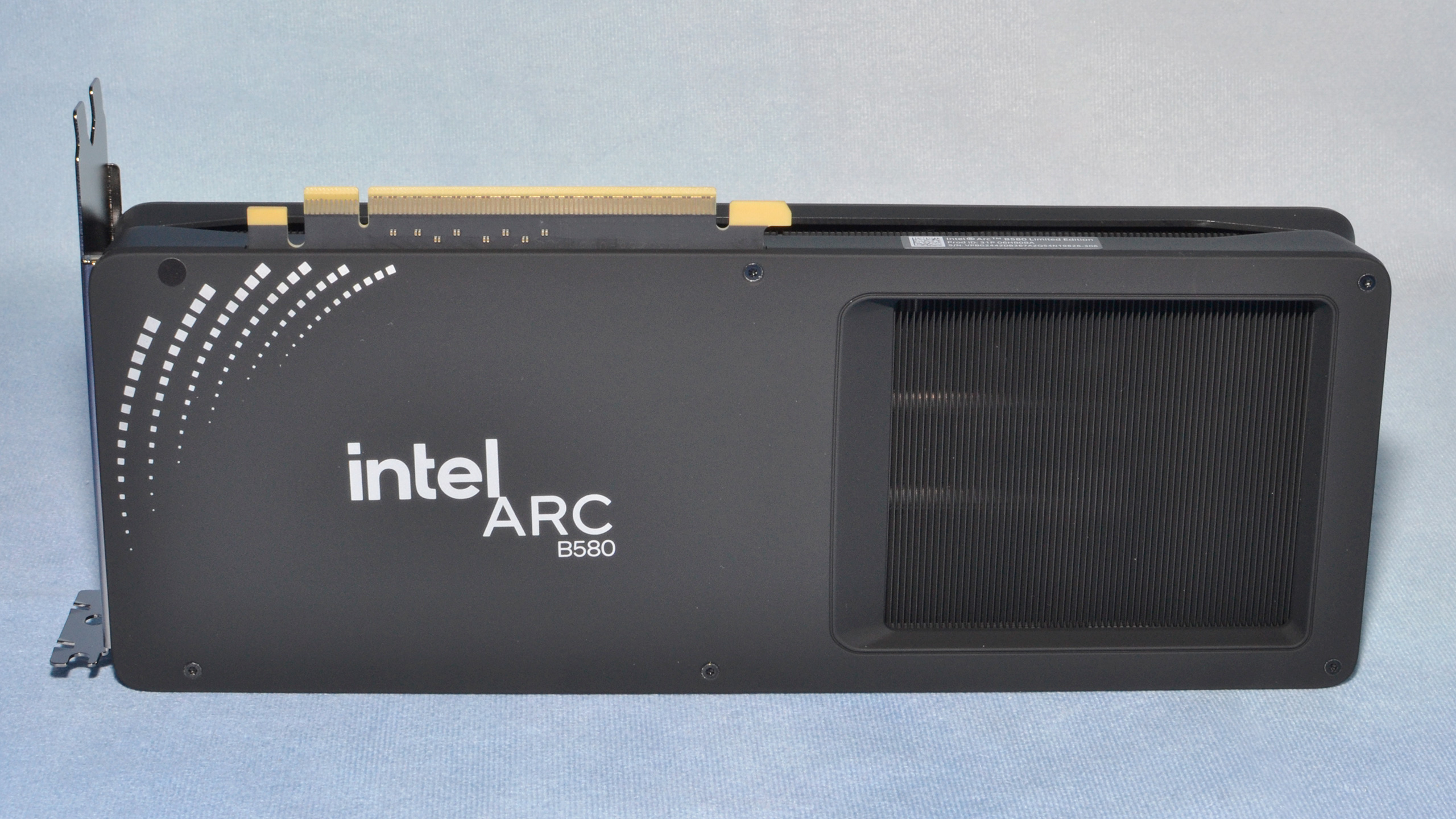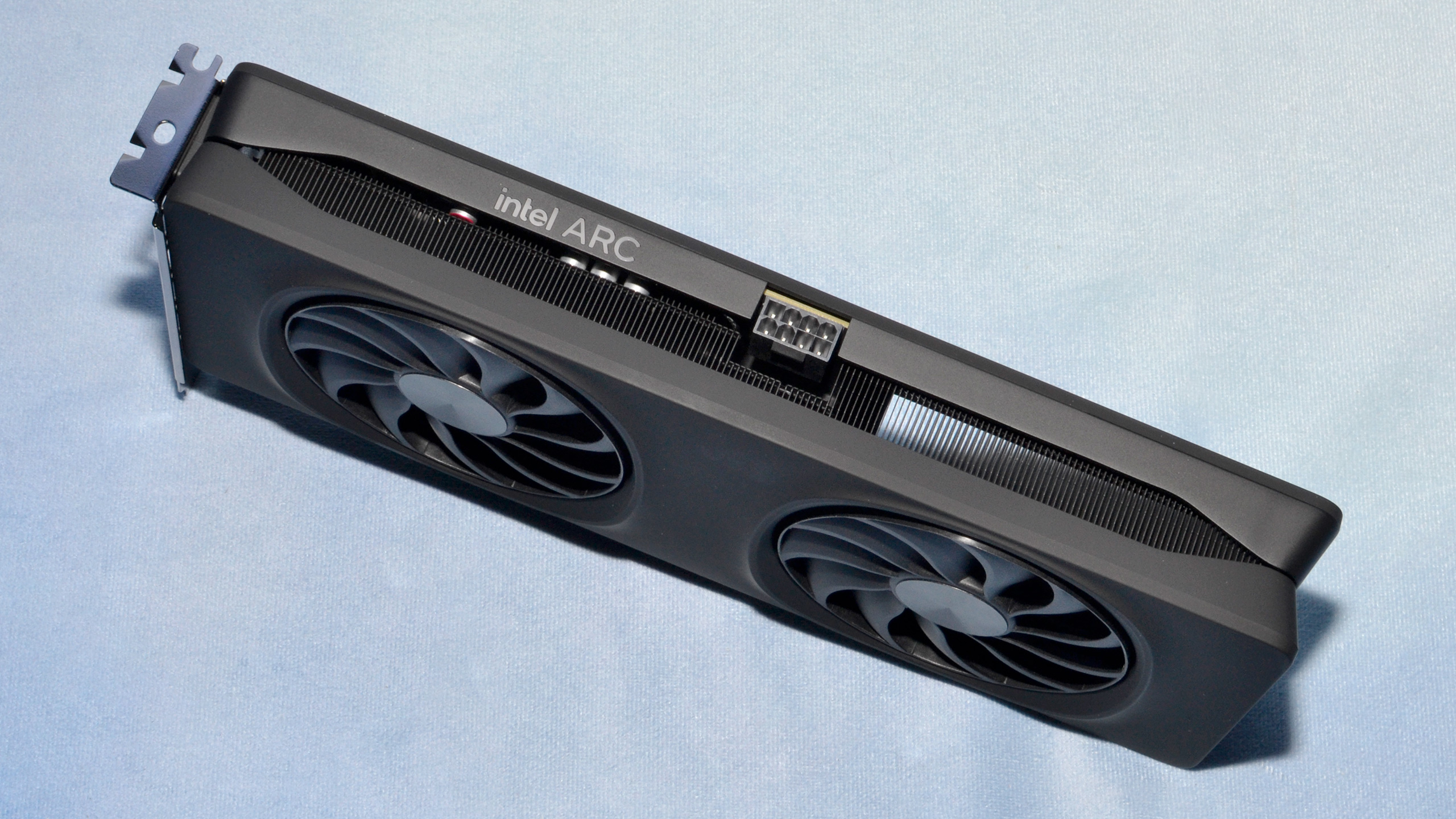Why you can trust Tom's Hardware
All of our gaming tests are conducted using an Nvidia PCAT v2 device, which allows us to capture total graphics card power, GPU clocks, GPU temperatures, and some other data as we run each gaming benchmark. We'll have separate 1080p, 1440p, and 4K results for each aspect.
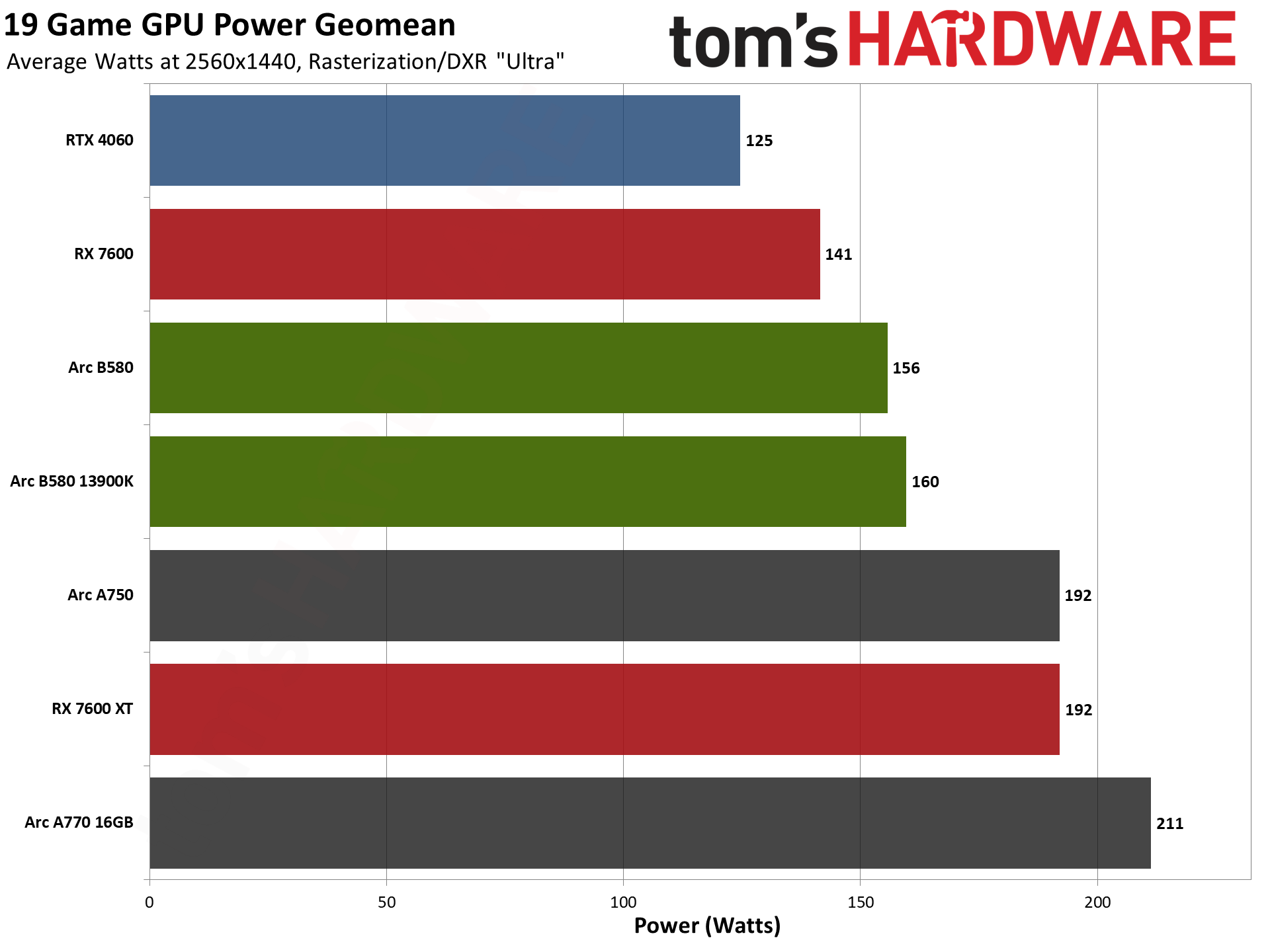
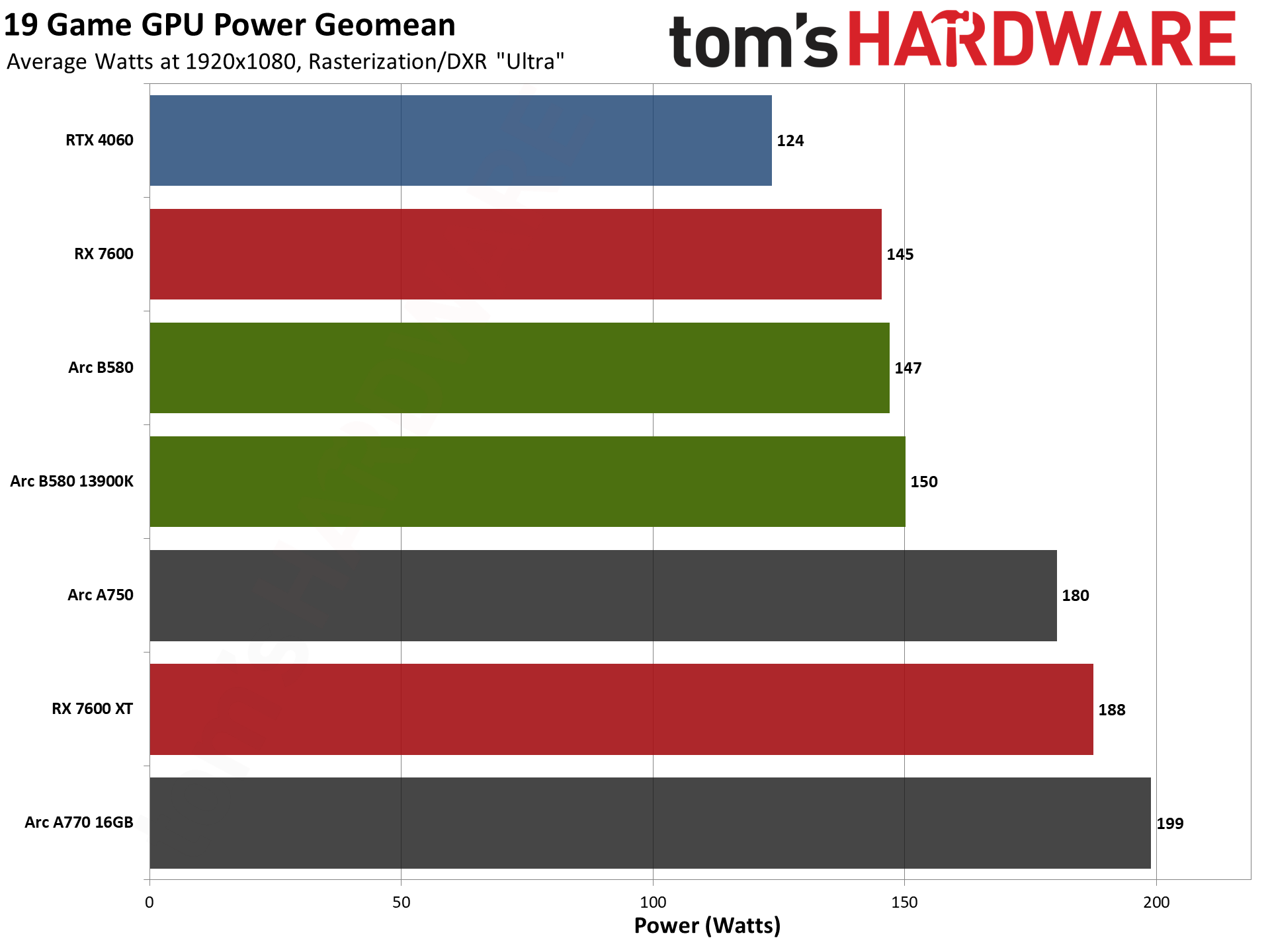
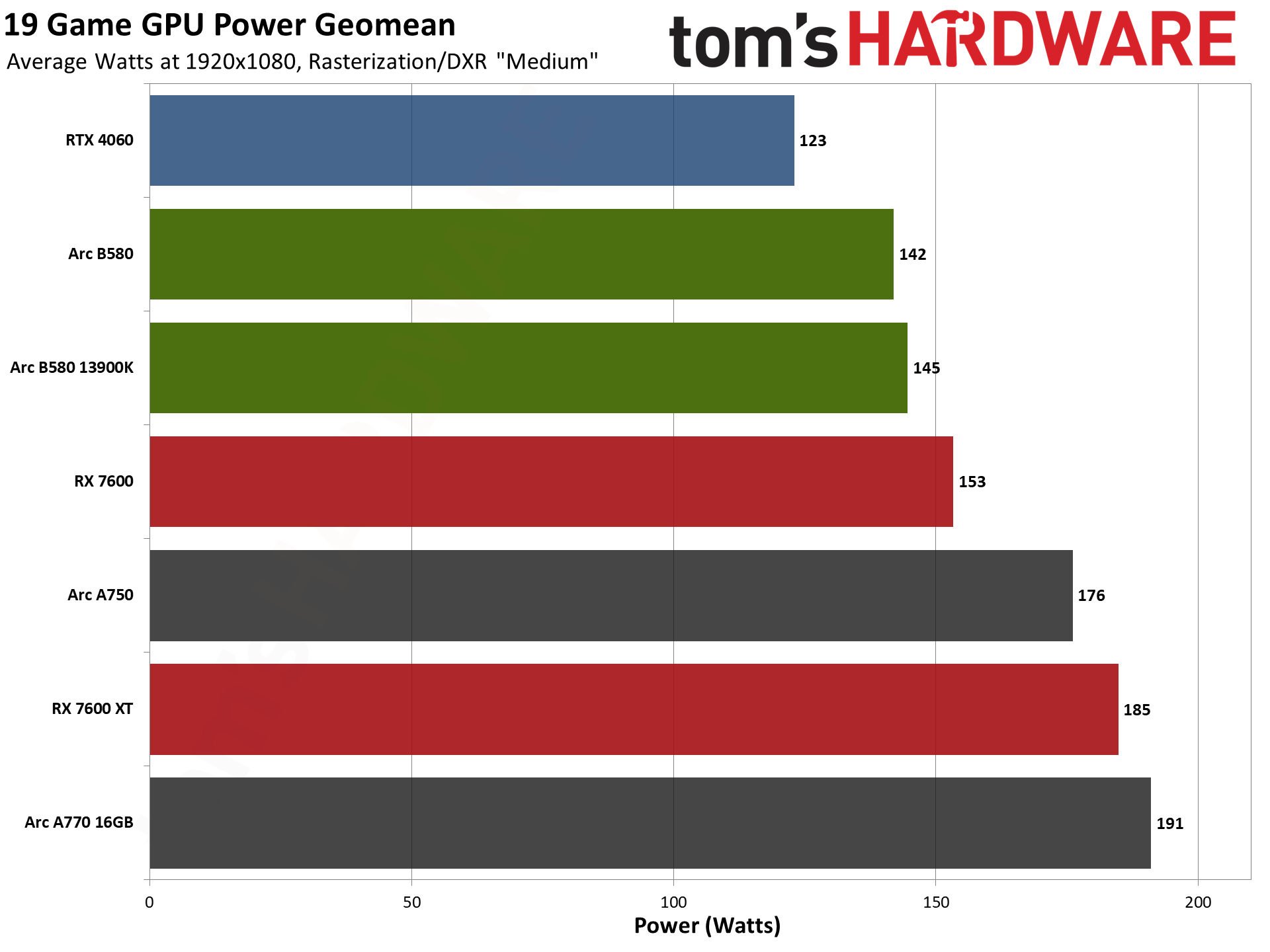
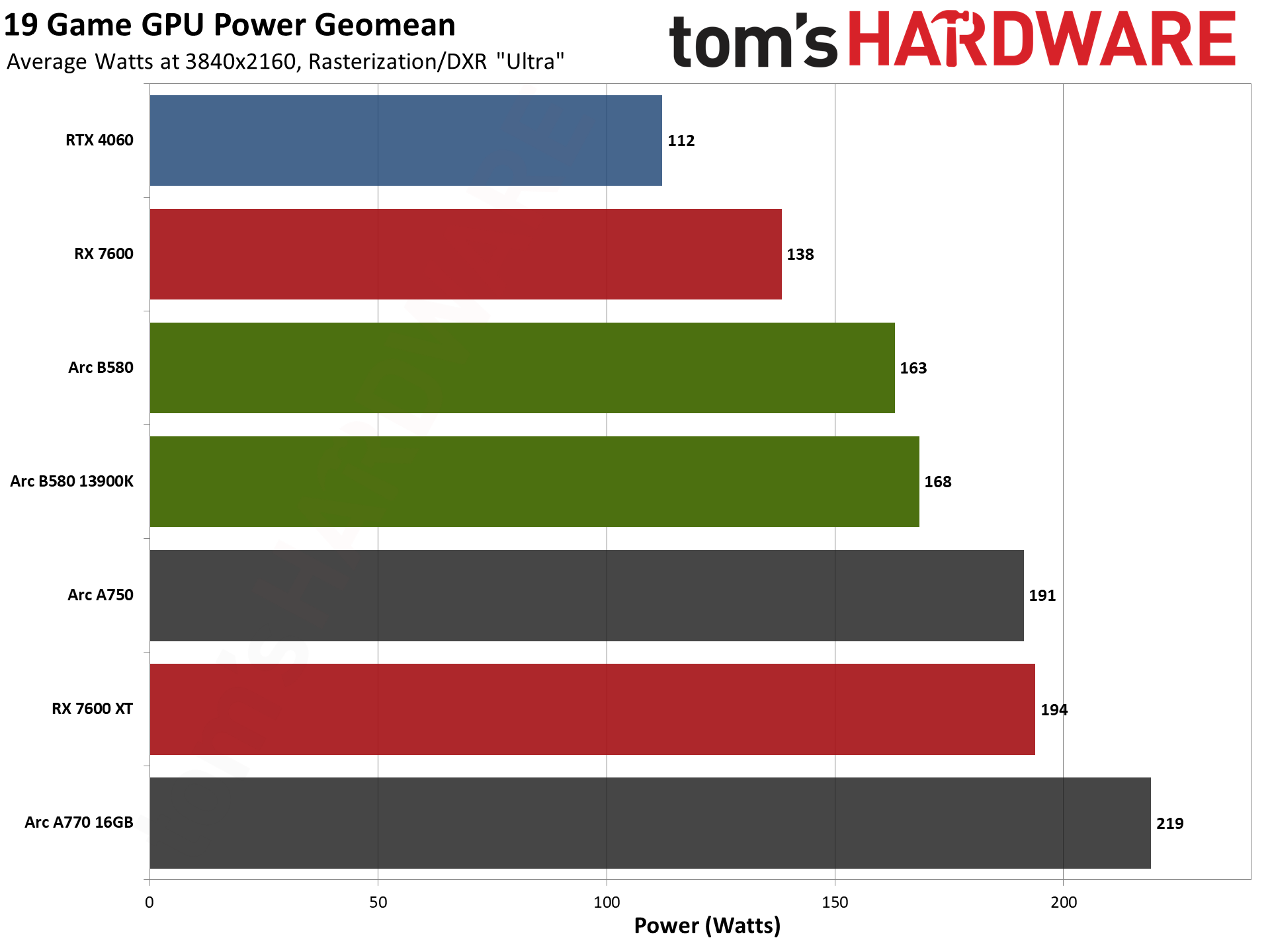
Intel gives an official TBP (total board power) rating of 190W for the Arc B580. That's 35W lower than the A770 and A750, but it's also possible for a GPU to come in above or below its official rating. With the PCAT, we can see precisely where the B580 ends up. And the good news is that it often comes in quite a bit lower than to official TBP.
On average, the B580 used 142W at 1080p medium, 147W at 1080p ultra, 156W at 1440p, and 163W at 4K. As you'd expect, power use typically increases at higher settings and resolutions. Some games tend to be less demanding of the GPU overall, helping to bring the average down, but none of the games consistently exceeded the 190W TBP rating.
Compared to the RTX 4060, though, Arc B580 isn't exactly the most efficient GPU around. Nvidia's Ada Lovelace GPUs have proven to be excellent on power use, so in terms of performance per watt the RTX 4060 still easily beats the competition. The B580 does better than AMD's RX 7600 XT, but that's also on a less advanced TSMC N6 node rather than Battlemage's N5.
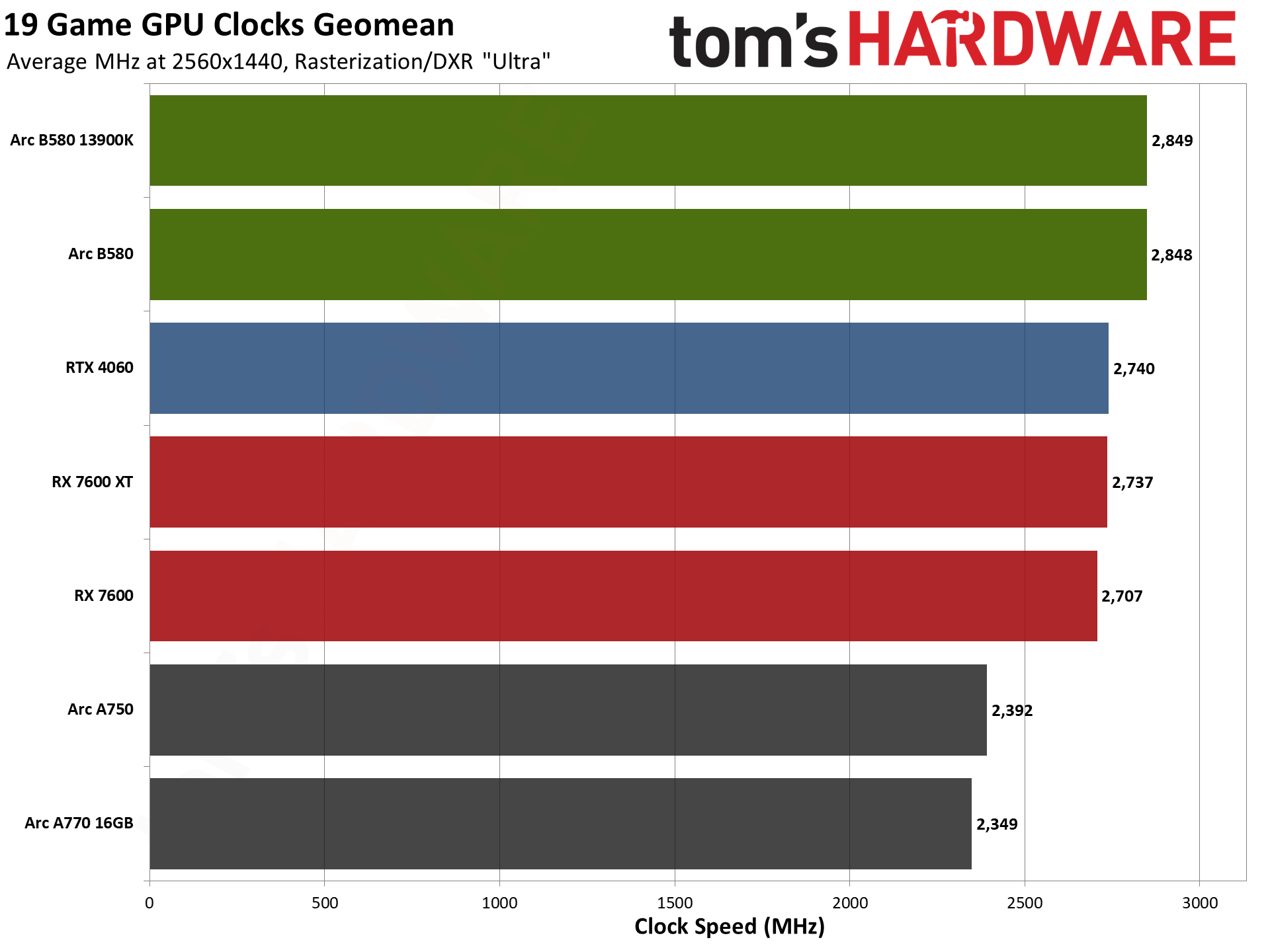
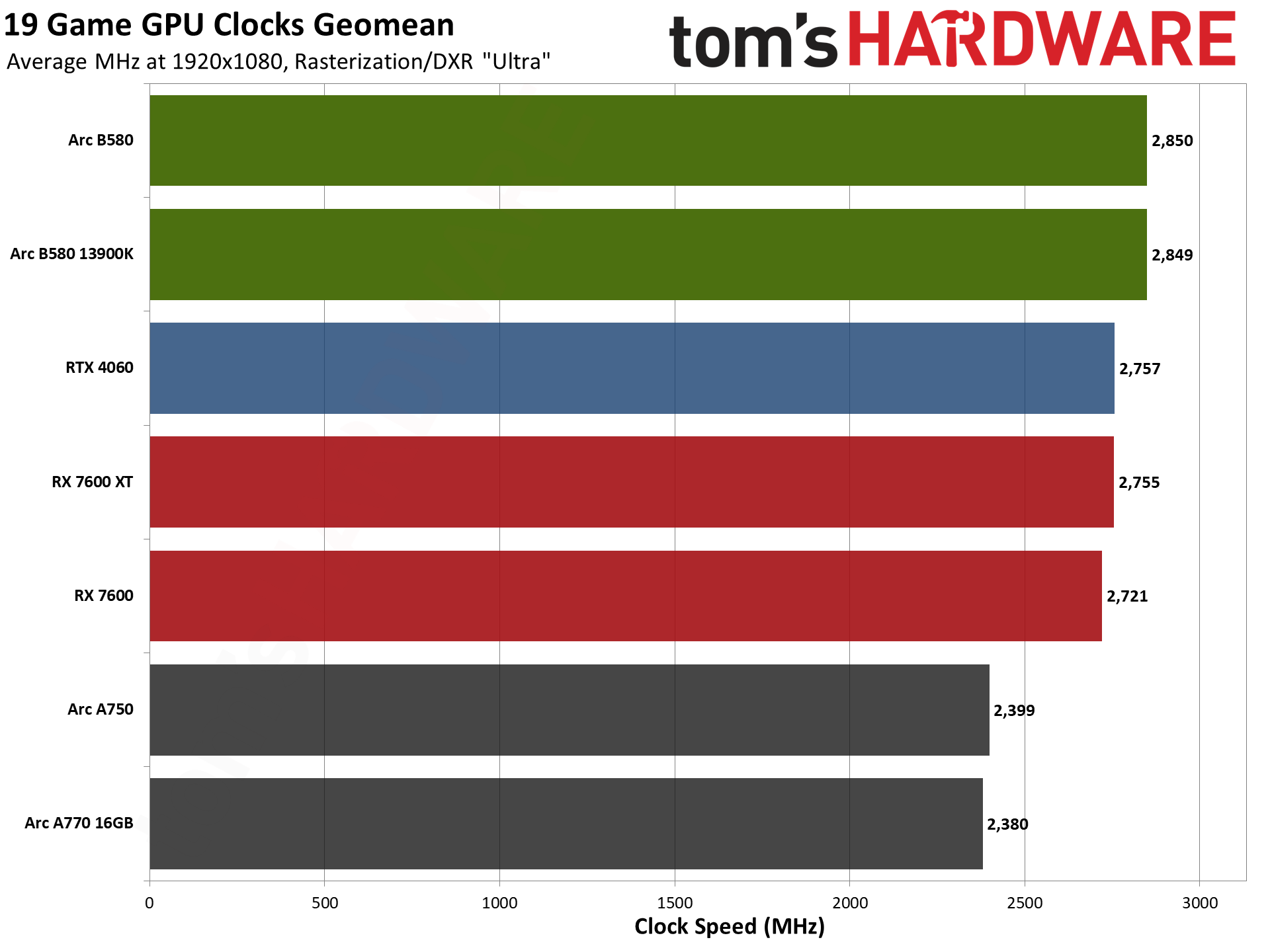
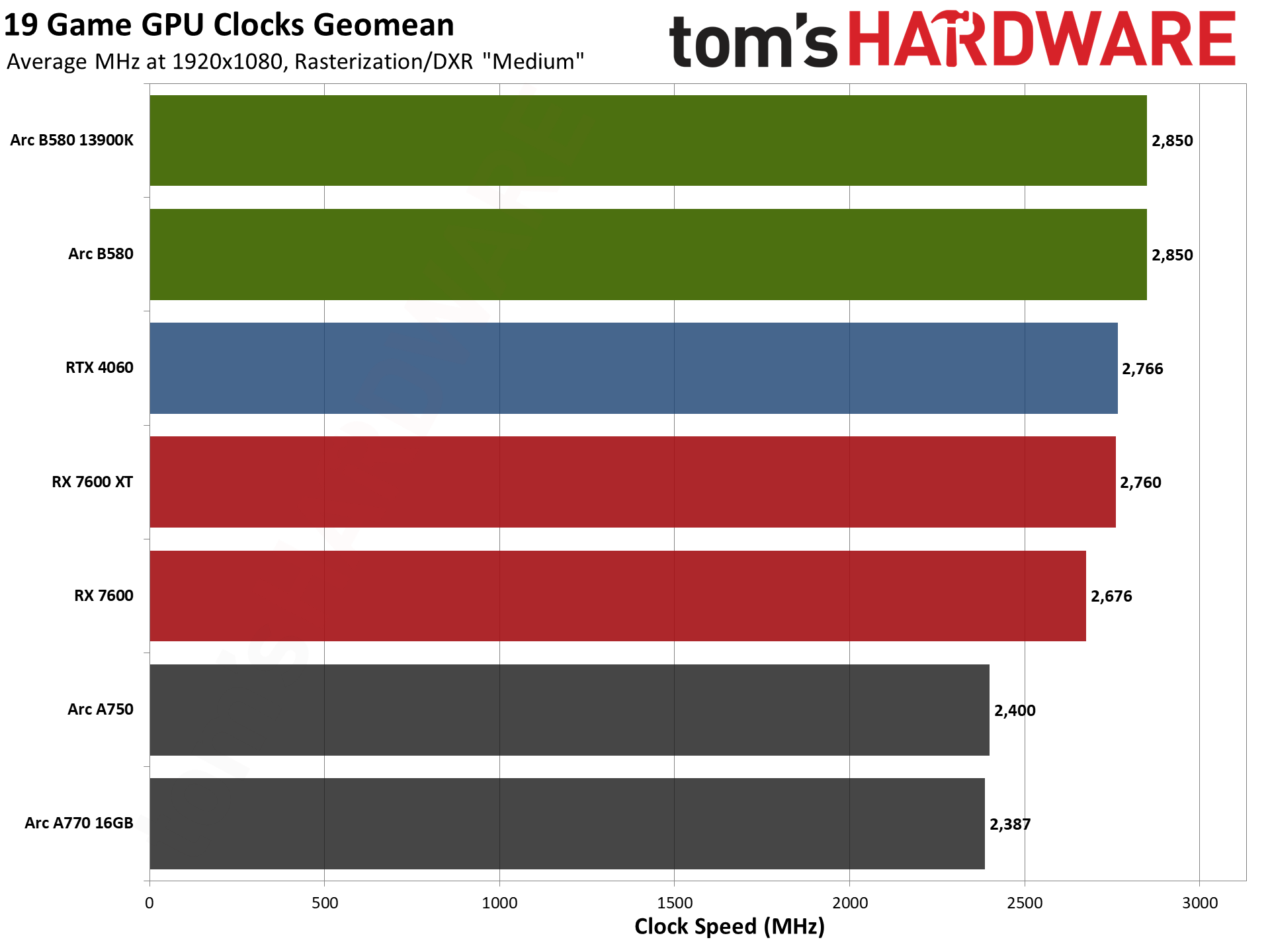
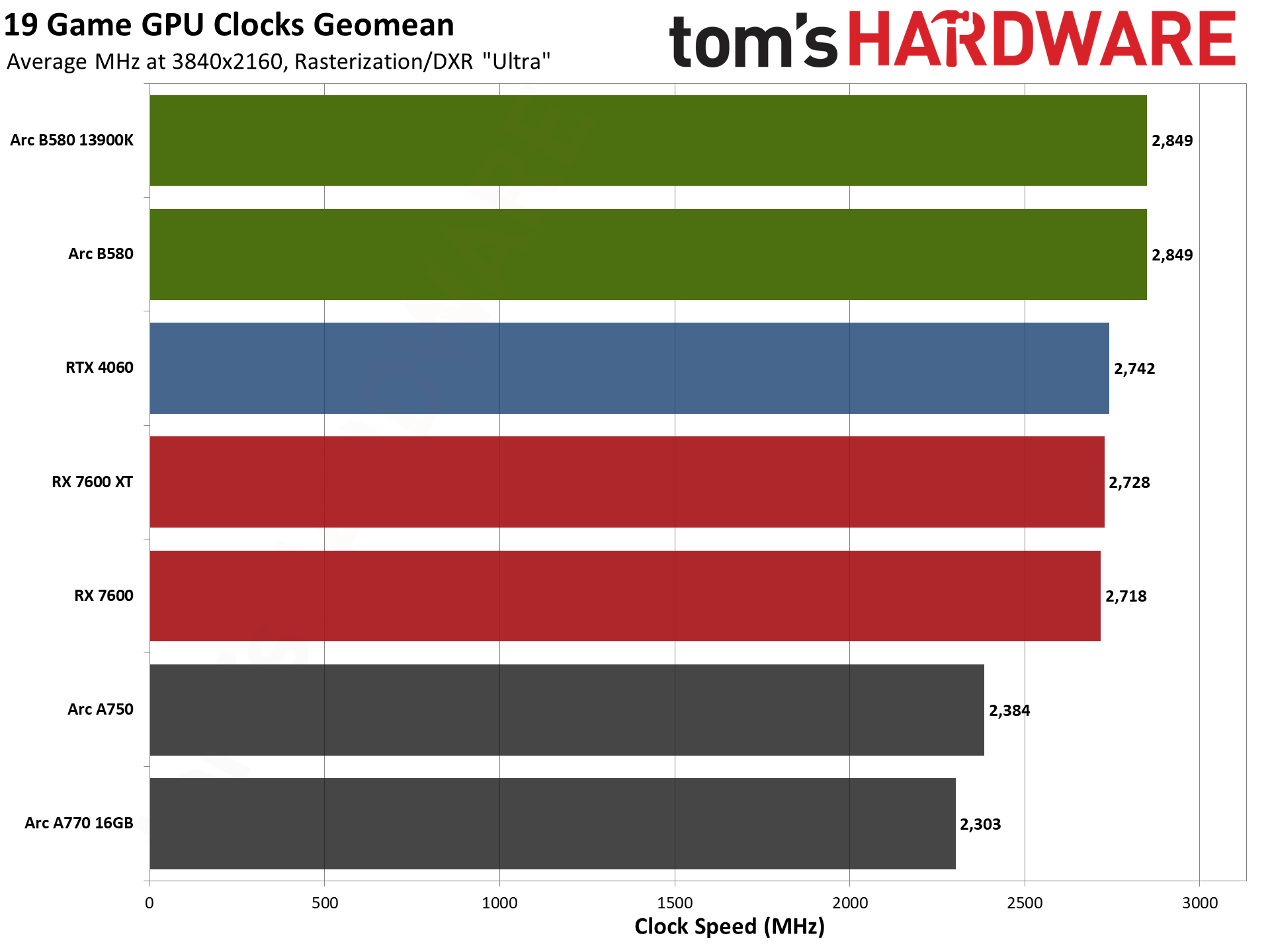
Clock speeds among the different GPUs and architectures aren't particularly important, but it's interesting to see how things have changed. Nvidia's RTX 30-series and earlier tended to top out at around 1.9 GHz, and AMD's RX 5000-series and earlier clocked even lower. But then AMD broke the 2 GHz barrier with RDNA 2 and everyone else followed.
Intel's A-series GPUs all maxed out at around 2.4 GHz. With Battlemage, the limit is quite a bit higher at 2,850 MHz max — and overclocking can push that even higher. Intel indicated that with higher power limits, more voltage, and a bump in clock speed that around 3.1 GHz might be possible on a lot of the B580 chips. Now we have to wonder when factory stock GPUs will start to break the 3 GHz barrier.
Note also that the B580 appears to be limited by the reference boost clock rather than by power. There are some games where it gets closer to a power limit, but nearly everything in our test suite ran at a steady 2850 MHz.
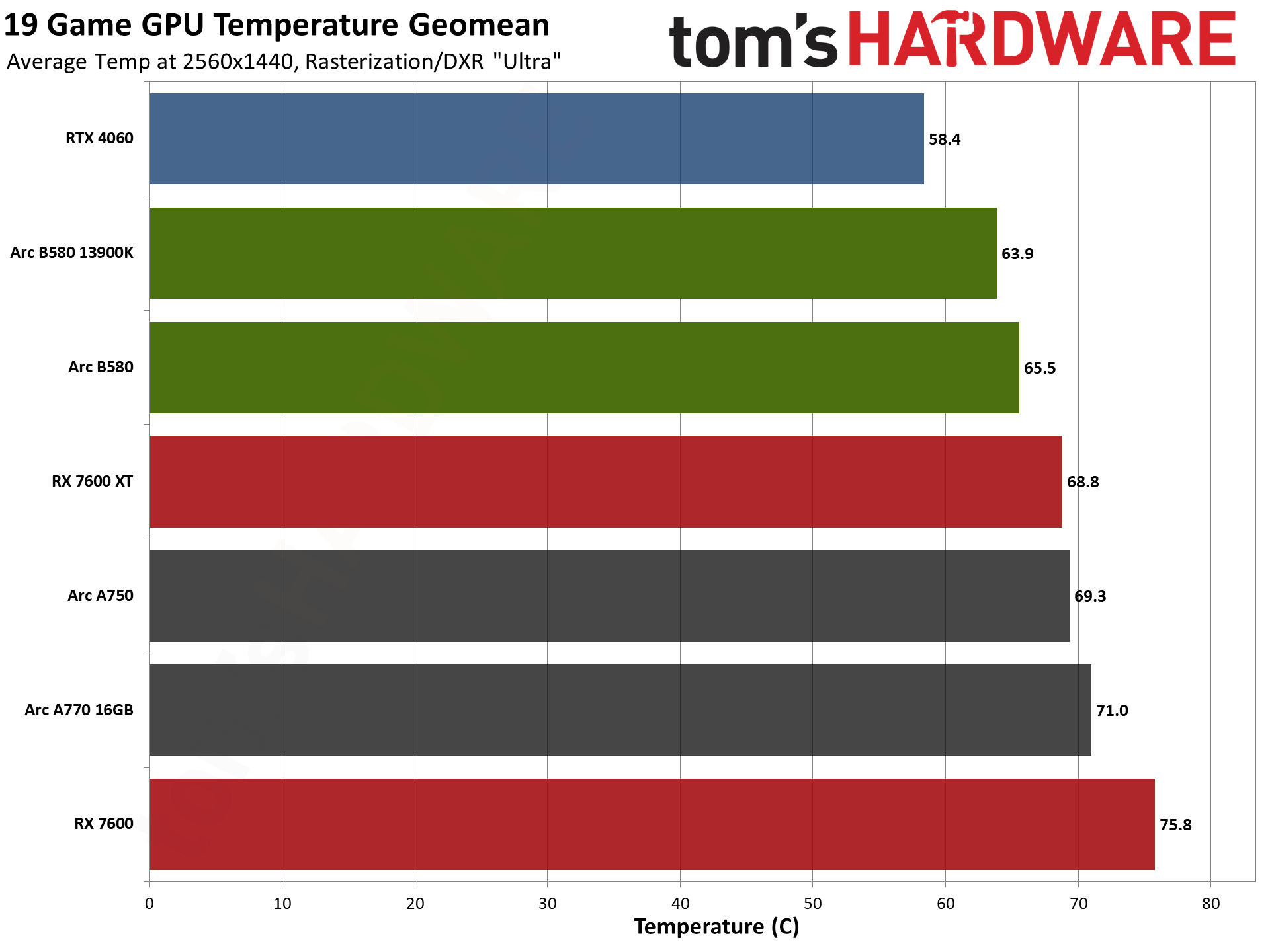
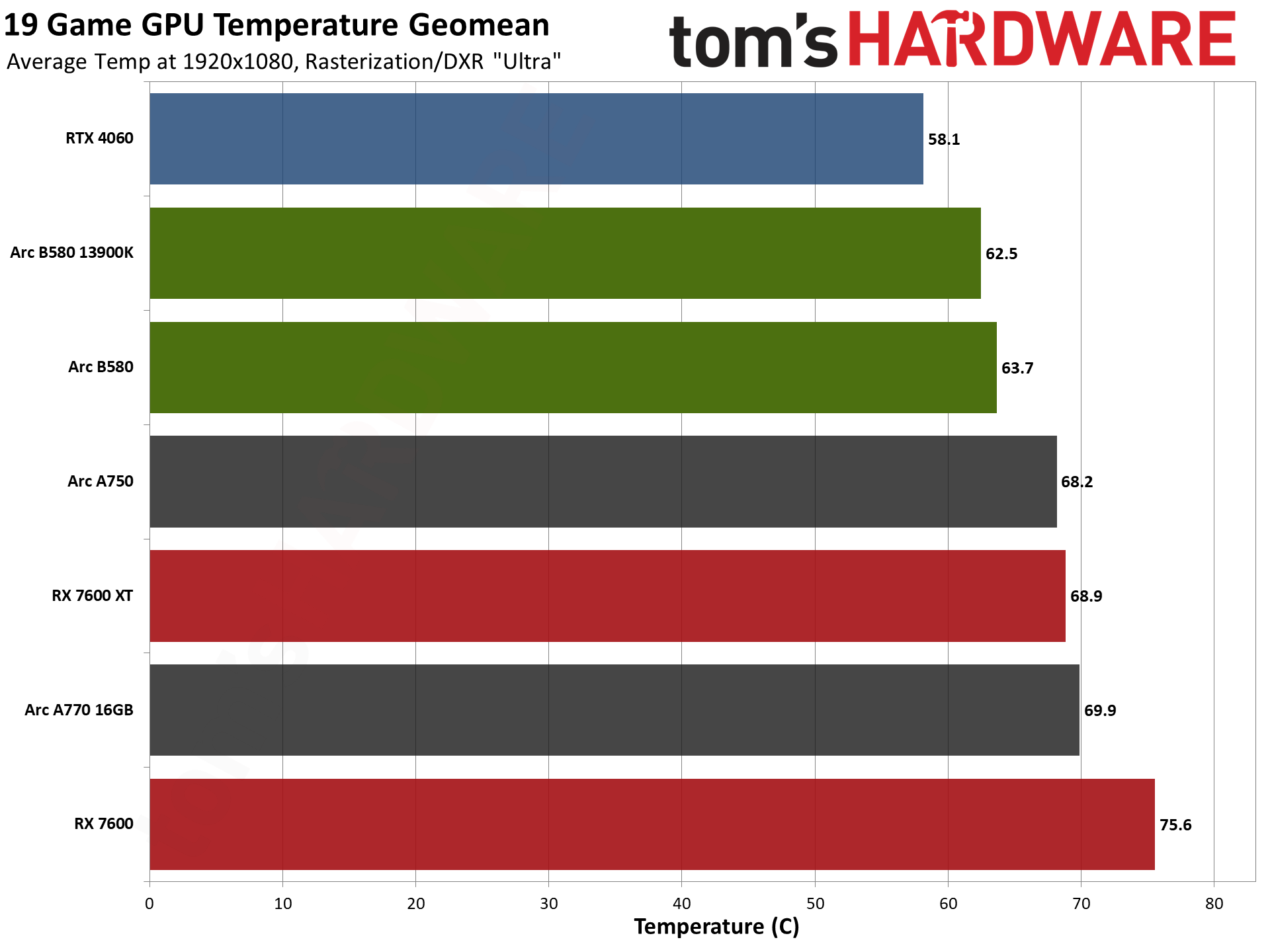
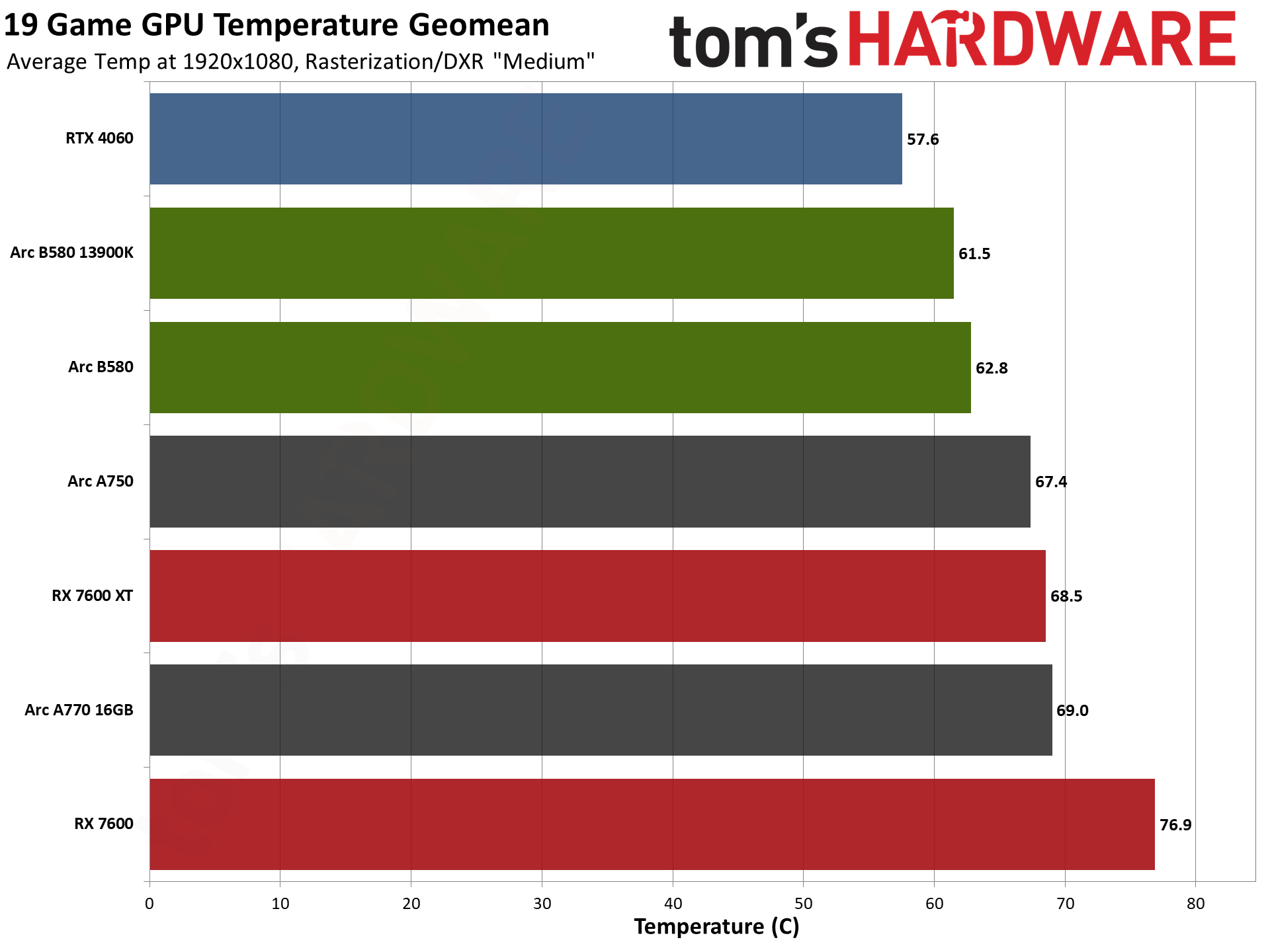
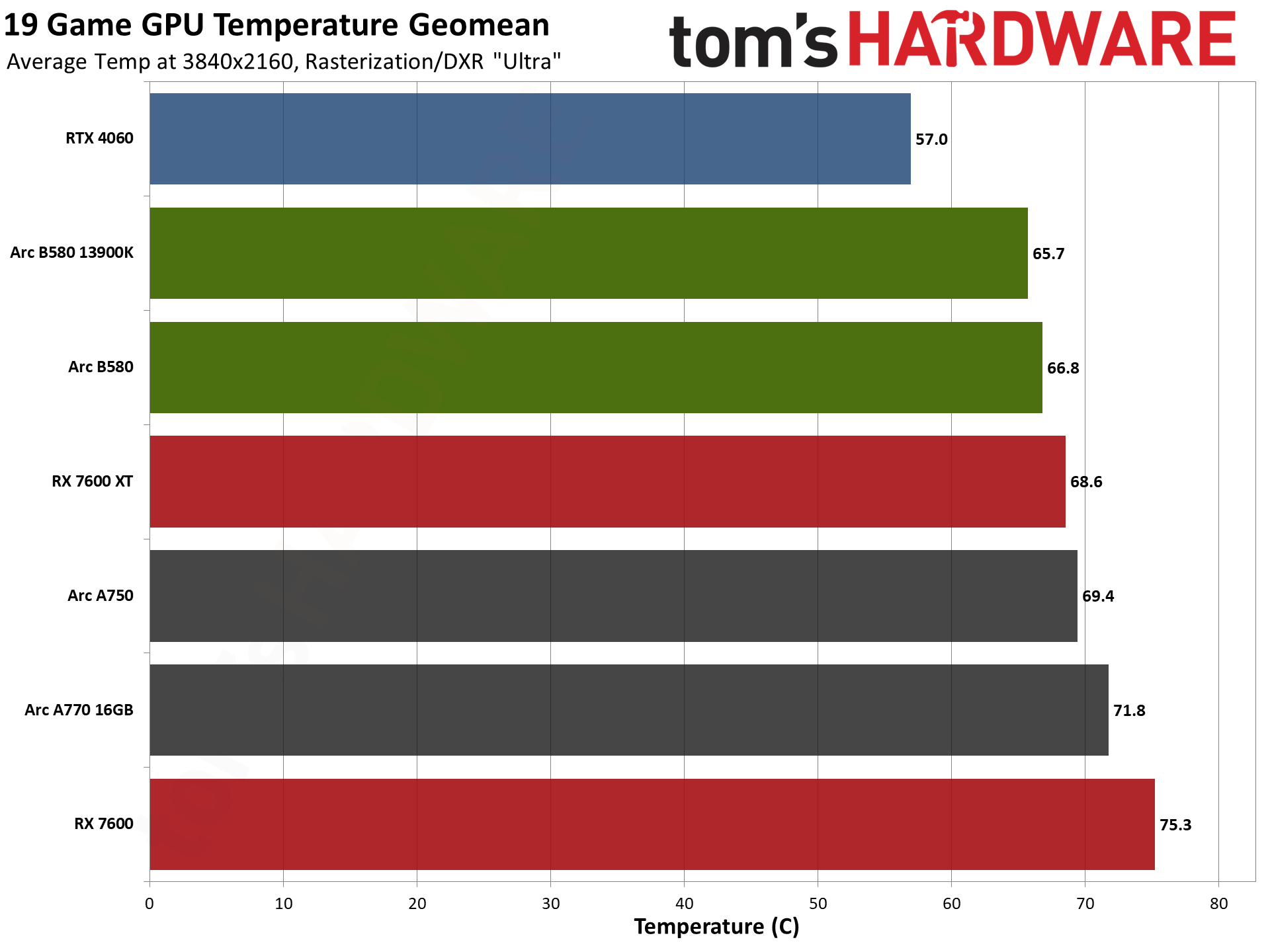
Like the clock speeds, comparing GPU temperatures without considering other aspects of the cards doesn't make much sense. One card could run its fans at higher RPMs, generating more noise while being "cooler." So these graphs should be used alongside the noise and performance results.
The Arc B580 Limited Edition runs at reasonable temperatures for our test environment. We've seen cooler running cards, like the Asus RTX 4060 Dual we've used for these tests, but not by much. As we'll see next, the low temperatures are backed by low noise levels, so Intel has created a very nice reference card design.
We check noise levels using an SPL (sound pressure level) meter placed 10cm from the card, with the mic aimed right at the center of one fan: the center fan if there are three fans, or the right fan for two fans. This helps minimize the impact of other noise sources like the fans on the CPU cooler. The noise floor of our test environment and equipment is around 31–32 dB(A).
[Charts to come, sorry! Still testing...]
- MORE: Best Graphics Cards
- MORE: GPU Benchmarks and Hierarchy
- MORE: All Graphics Content
Get Tom's Hardware's best news and in-depth reviews, straight to your inbox.
Current page: Intel Arc B580: Power, Clocks, Temps, and Noise
Prev Page Intel Arc B580: Content Creation and AI Performance Next Page Intel Arc B580: A nice generational improvement
Jarred Walton is a senior editor at Tom's Hardware focusing on everything GPU. He has been working as a tech journalist since 2004, writing for AnandTech, Maximum PC, and PC Gamer. From the first S3 Virge '3D decelerators' to today's GPUs, Jarred keeps up with all the latest graphics trends and is the one to ask about game performance.
-
Math Geek nicely done :)Reply
looks like a good value. i'm in the market for my next card but seems like waiting a little bit to see what AMD does next is not too bad of an idea. i hate waiting to see what the next best thing is but this close it seems like prudent advice.
side note: it does look like you forgot to replace the place holders on the power consumption paragraph.
"On average, the B580 used xxxW at 1080p medium, xxxW at 1080p ultra, xxxW at 1440p, and xxxW at 4K. As you'd expect, power use typically increases at higher settings and resolutions." -
Jagar123 I am happy to have competition in the market. I imagine next gen AMD and Nvidia cards will be stronger competitors but they might be priced poorly again. Price to performance is key here. We'll see in a month or so.Reply -
shady28 Great review, against relevant parts for this price class too :DReply
Given that Steam shows the 3 most popular GPUs are the 3060 discrete, 4060 laptop, and 4060 discrete, Intel now has a GPU that competes in the largest part of the segment - and leads it in both value and performance.
Granted AMD and Nvidia are about to release new GPUs, but let's also note that the 5060 / 8600 aren't likely to show up until late 2025 or early 2026 if they follow their normal pattern. -
palladin9479 Great review, I'm in the market for a SFF two slot low power card for a living room system. The APU can only do so much and I'm starting to hit walls with it lately so a lower power dGPU might be the only real answer.Reply -
Gururu I guess it will come down to an availability issue. I doubt we will see superior cards by AMD or nVidia in this price bracket by end of Q1 2025. We will certainly see lots of benchmarks blowing these early battlemage offerings in January, but nothing ready for purchase. Later battlemage offerings are in my best guess going to be in the $400 range, likely beating 7800 and 4070, but again probably not until mid-late Q1. If AMD and nVidia drop anything crushing a 4090 you can bet it will be in the $700+ range. Is it fair to say that something beating the B580 readily available in April for $250 is fair competition now? I don't know. Maybe not if a normal consumer can actually get B580 silicon before Christmas.Reply -
Eximo Reply
I would probably still lean towards an RTX 3050 6GB for that. B580 is still a little power hungry for the job.palladin9479 said:Great review, I'm in the market for a SFF two slot low power card for a living room system. The APU can only do so much and I'm starting to hit walls with it lately so a lower power dGPU might be the only real answer.
I use an A380, and that isn't ideal either, since it still needs an 8-pin (at least that model). Though supposedly still only a 75W GPU. -
DS426 Great review, Jarred! The elaboration on your thinking and updating of your test bench's hardware and software is appreciated.Reply
It'll be some time before AMD and NVIDIA (green wants it written this way, by the way: http://http.download.nvidia.com/image_kit/LG_NVCorpBadge.pdf ... was curious as I noticed they have it written that way on their website) have new budget GPU's in this price class, so I myself wouldn't really recommend that a prospective owner waits. Of course, a lot of it also depends on if building new or upgrading (and upgrading from what). There's a huge user base at this price point, so I do imagine that Intel will get some market penetration for end users, not just prebuilds. This, particularly since day 1 drivers are already fairly stable overall and Intel now has the value leader at this price point; Intel didn't mess up this launch, whereas botched launches can tarnish audience sentiment of the product for months and years, if not permanently. -
King_V Definitely liking what I see here. And, glad to know that Intel is taking this very seriously. They're clearly not messing around.Reply -
rluker5 Transistor density pretty close to AMD.Reply
Transistor density of 7600XT is 65.2 M/mm2 and B580 is 72.1 M/mm2 per Techpowerup. Sure B580 is on 5nm while 7600XT is on 6nm but that isn't that big a difference. Definitely moving in the right direction. And more importantly performance per mm2 is much closer to AMD. And performance per watt.
Catching up really fast. -
caseym54 Probably flogging a dead horse here, but a 6-column table with 5 columns visible and a slider is truly lame.Reply
